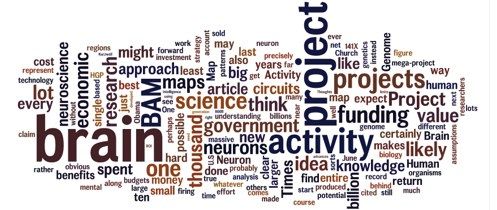A bright future for neuroethics after Obama greenlights huge neuroscience project
Neuroethics looks like the place to be for up-and-coming bioethicists after President Obama’s state of the union address. He specifically mentioned neuroscience as the Next Big Thing in American science

Neuroethics looks like the place to be for up-and-coming bioethicists after President Obama’s state of the union address. He specifically mentioned neuroscience as the Next Big Thing in American science: “Every dollar we invested to map the human genome returned $140 to our economy — every dollar,” he said. “Today our scientists are mapping the human brain to unlock the answers to Alzheimer’s. They’re developing drugs to regenerate damaged organs, devising new materials to make batteries 10 times more powerful. Now is not the time to gut these job-creating investments in science and innovation.”
Exactly what the President had in mind is not clear, but he appears to have been referring to the Brain Activity Map project (BAM). Apparently it will cost US$3 billion over 10 years. Scientists hope that it will answer questions about diseases like Parkinson’s, autism and Alzheimer’s. It could also speed up the development of artificial intelligence. It would spark many developments which would need ethical analysis.
It is an exciting and ambitious project – but there are sceptics. Neuroscientist Christopher Chabris, of Union College, in upstate New York, pours cold water on the proposal in his blog. First, 10 years may not be long enough. The brain is so complex that a decade may be needed to map every neuron in the drosophila brain.
Second, he asks, should $3 billion spent on one project? Inevitably funding would dry up for other neuroscience projects. Would the money be better spent on a thousand projects costing $5 million each? The return on investment for the Human Genome Project, which is 14,000% according to President Obama, may have been exaggerated. It turns out that the ROI figure was plucked from a report made by a company which makes equipment used in life science research. “I find this figure hard to believe, not to say preposterous,” writes Dr Chabris.
The BAM would yield fascinating results, he says. “But the sheer size of a full BAM project might focus our attention and hopes on the BAM as the be-all and end-all of neuroscience, and distract the field from devoting energy to those other levels.”
Michael Cook
Creative commons
neuroethics
neuroscience
- Queensland legalises ‘assisted dying’ - September 19, 2021
- Is abortion a global public health emergency? - April 11, 2021
- Dutch doctors cleared to euthanise dementia patients who have advance directives - November 22, 2020
